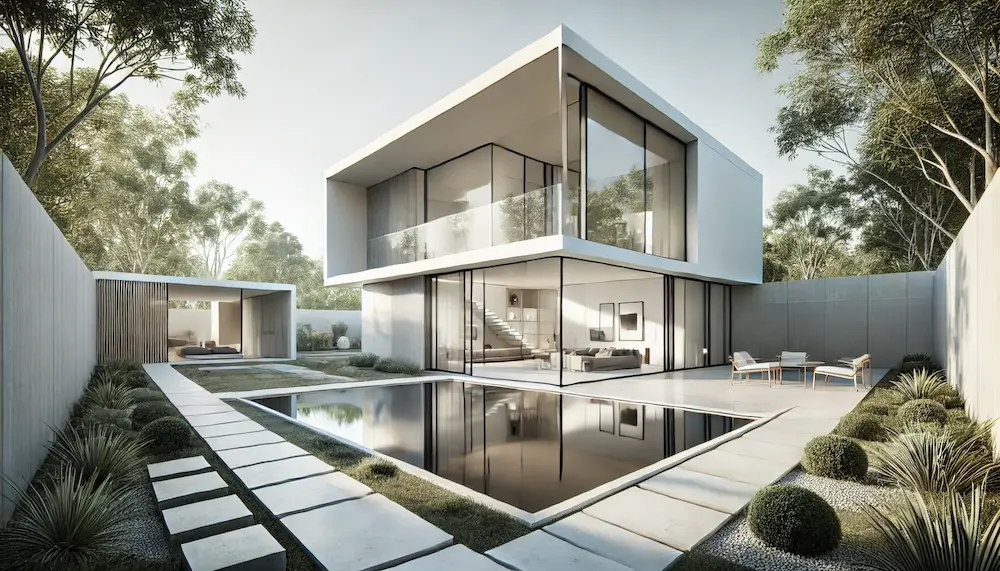Minimalist villas epitomize the “less is more” philosophy, emphasizing simplicity, functionality, and a harmonious connection with nature. This article explores the essence of minimalist villas, their historical evolution, defining features, applications, and key considerations for prospective homeowners.
Introduction to Minimalist Villas
A minimalist villa embodies the principles of minimalism in architecture, focusing on clean lines, open spaces, and the elimination of unnecessary ornamentation. This design approach creates serene and uncluttered living environments that emphasize functionality and the intrinsic beauty of materials.
History and Origins of Minimalist Villas
The roots of minimalist architecture can be traced back to the early 20th century, influenced by movements such as De Stijl and Bauhaus, which advocated for simplicity and the integration of form and function. Architects like Ludwig Mies van der Rohe, with his “less is more” philosophy, played a pivotal role in shaping minimalist design. His work, including the iconic Villa Tugendhat, exemplifies the minimalist approach with open spaces and a focus on material purity.
Key Features of Minimalist Villas
Minimalist villas are characterized by several distinctive elements:
- Simplicity and Clean Lines: Emphasis on geometric forms and uncluttered spaces, avoiding unnecessary decoration.
- Open Floor Plans: Designs that promote fluidity and flexibility, often incorporating multifunctional spaces.
- Natural Light Utilization: Strategic placement of large windows and openings to maximize natural illumination and create a connection with the outdoors.
- Use of Natural Materials: Incorporation of materials like wood, stone, and concrete to add warmth and texture while maintaining a neutral color palette.
- Functional Design: Prioritization of practicality, with built-in furniture and hidden storage solutions to maintain a clutter-free environment.
Applications of Minimalist Villas
Minimalist villas serve various purposes, including:
- Private Residences: Offering tranquil and uncluttered living spaces that promote relaxation and mindfulness.
- Vacation Homes: Providing serene retreats that allow occupants to disconnect from the complexities of daily life.
- Architectural Showpieces: Serving as exemplars of minimalist design principles, often featured in architectural publications and tours.
Considerations When Choosing a Minimalist Villa
When selecting or designing a minimalist villa, consider the following:
- Lifestyle Compatibility: Ensure that the minimalist design aligns with your daily living habits and preferences.
- Maintenance: While minimalist designs can reduce clutter, they may require meticulous upkeep to maintain their pristine appearance.
- Personalization: Consider how to incorporate personal touches without disrupting the minimalist aesthetic.
- Budget: High-quality materials and custom-built furniture common in minimalist designs can influence overall costs.
- Architectural Expertise: Engage with architects experienced in minimalist design to achieve the desired outcome.
Conclusion
Minimalist villas offer a harmonious blend of simplicity, functionality, and elegance. Rooted in early 20th-century architectural movements, they continue to inspire contemporary design with their timeless appeal. By understanding their key features and considerations, individuals can create living spaces that reflect the minimalist ethos, promoting tranquility and purposeful living.
